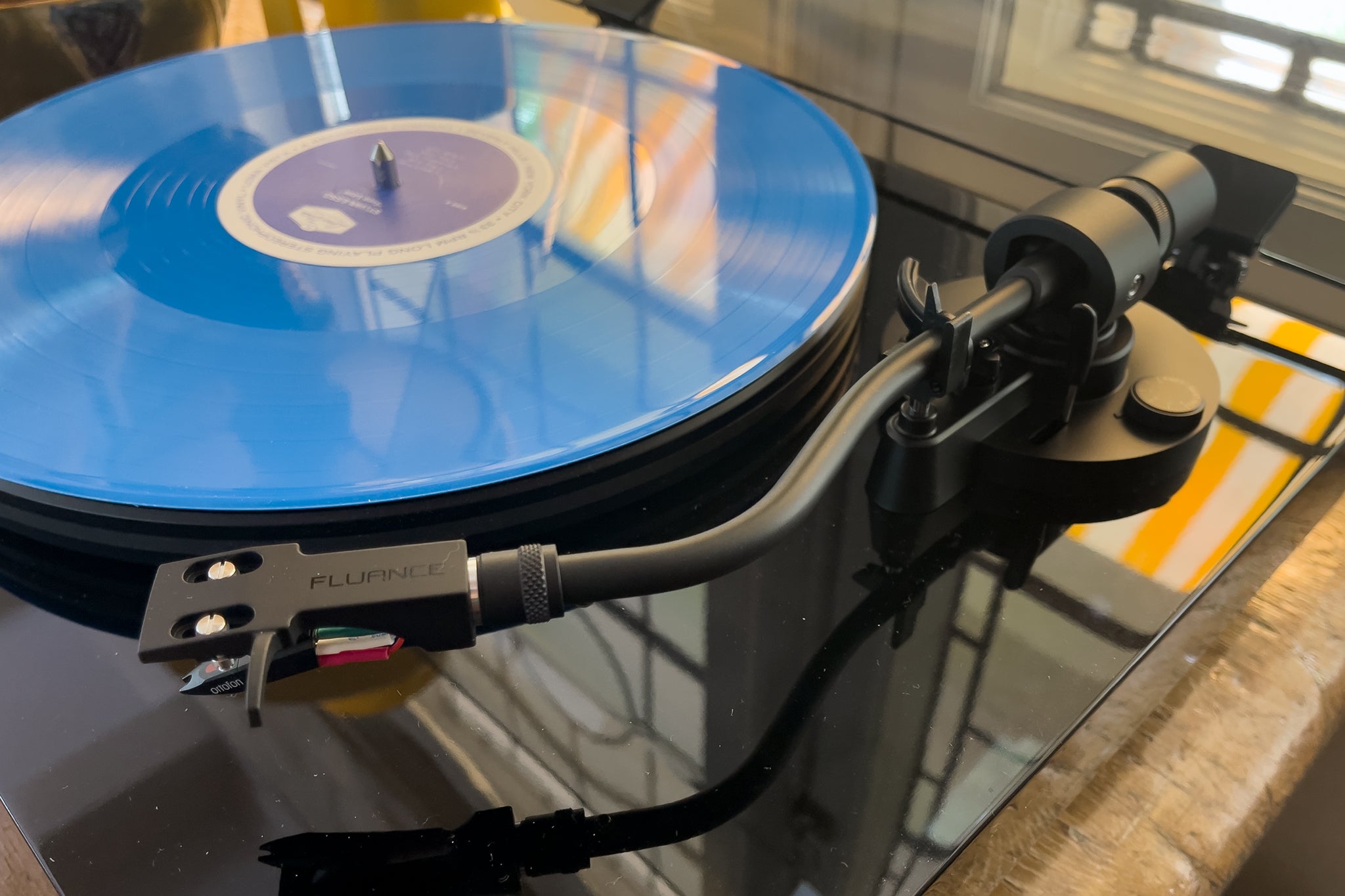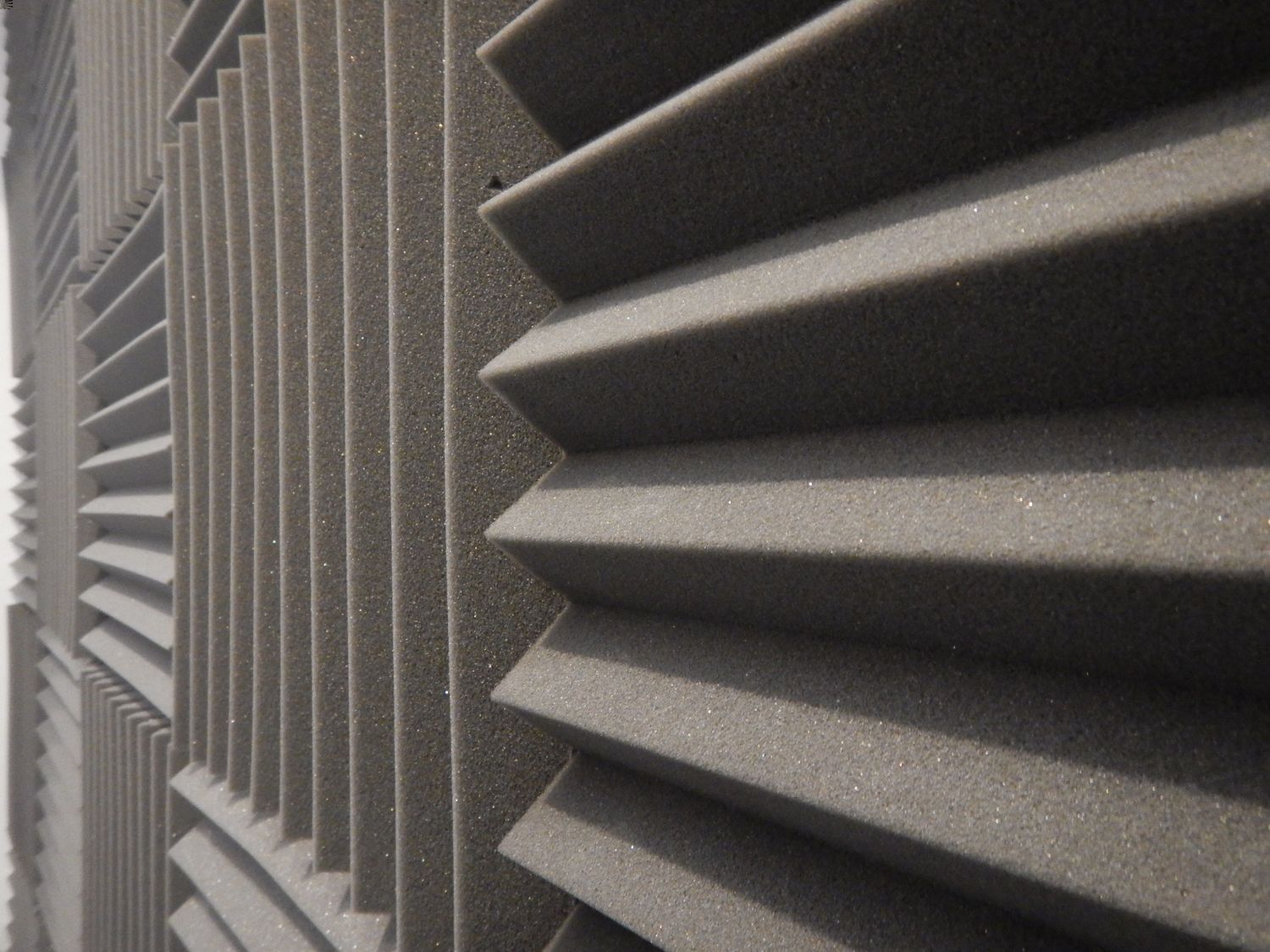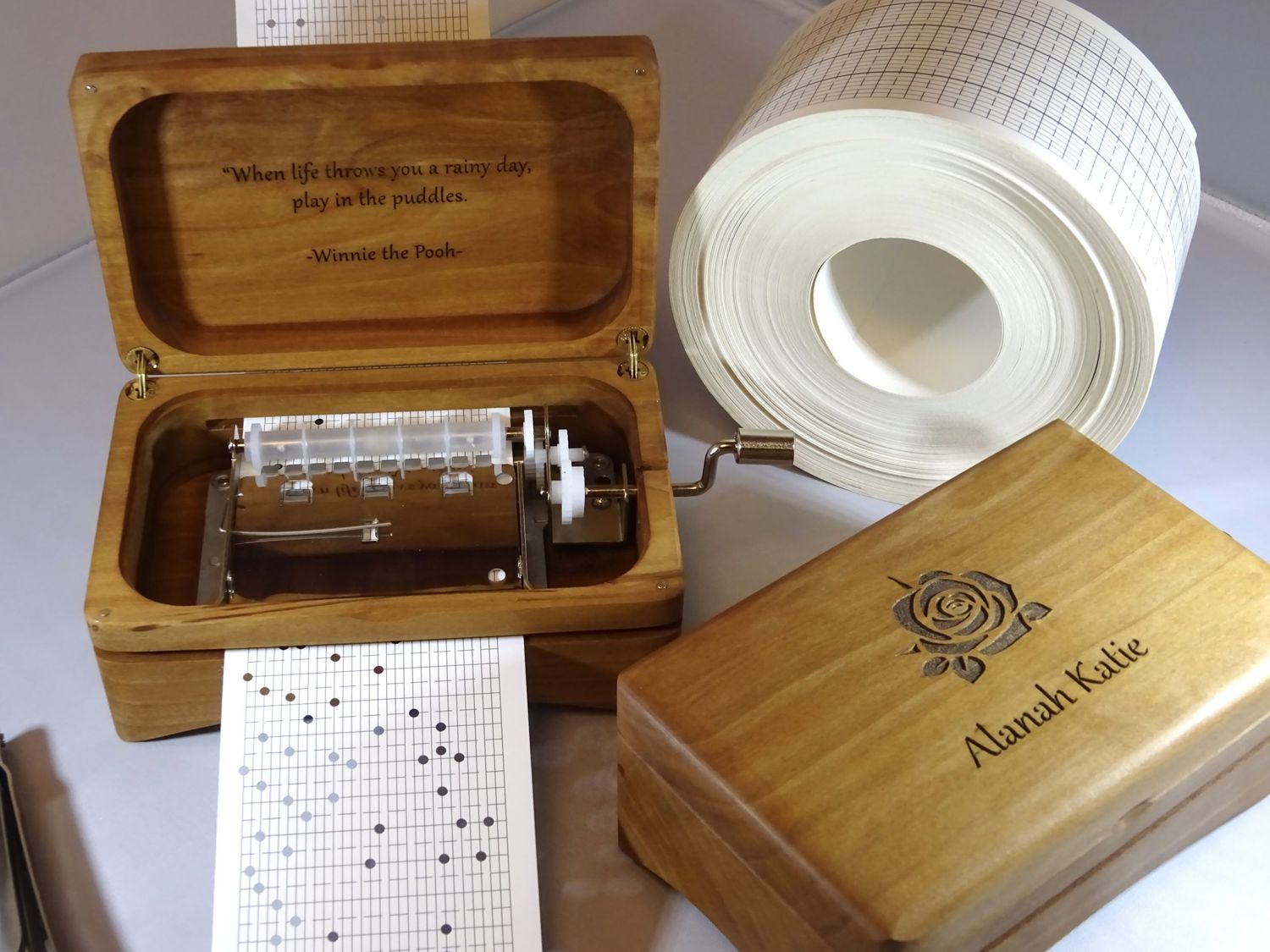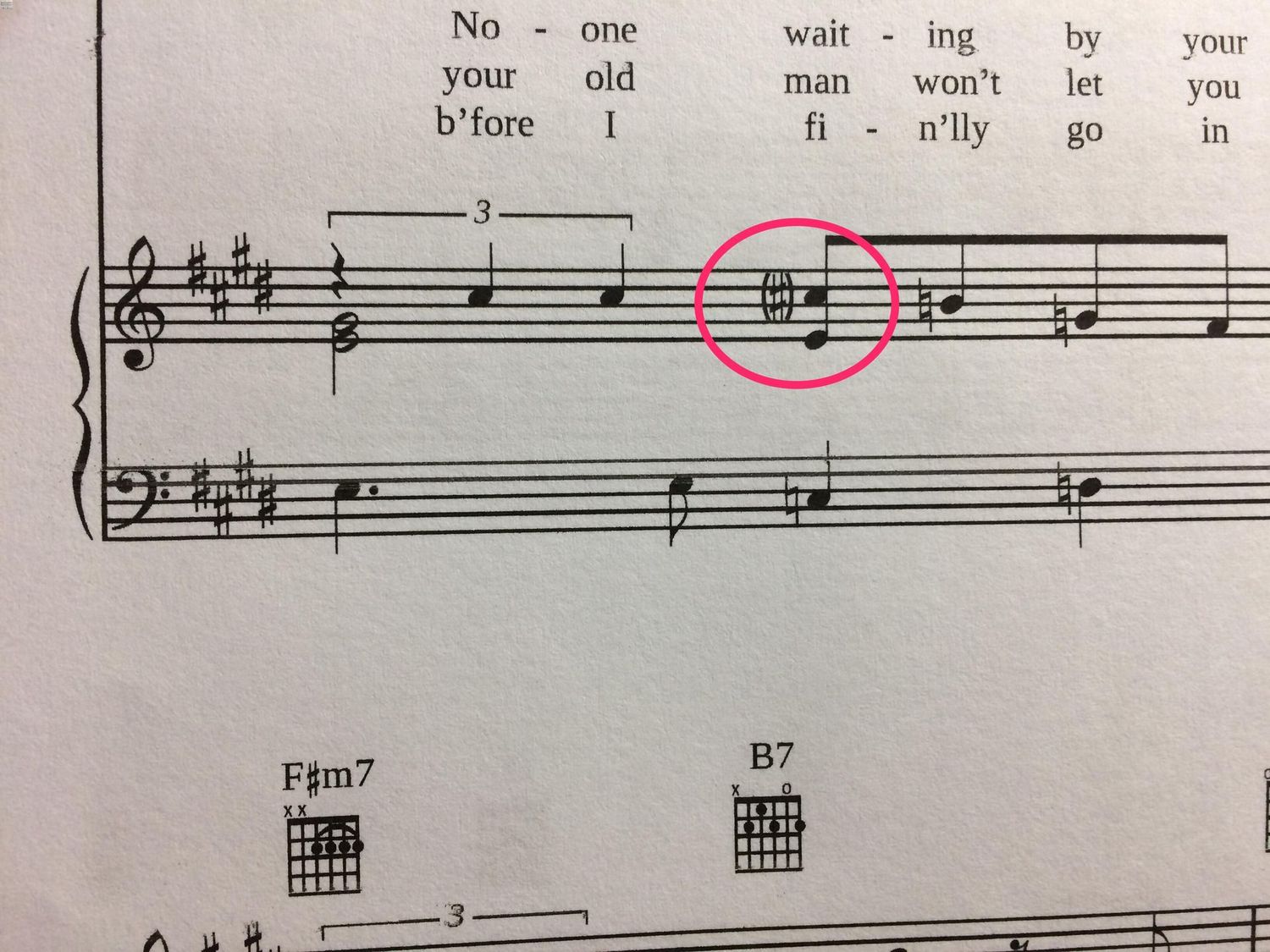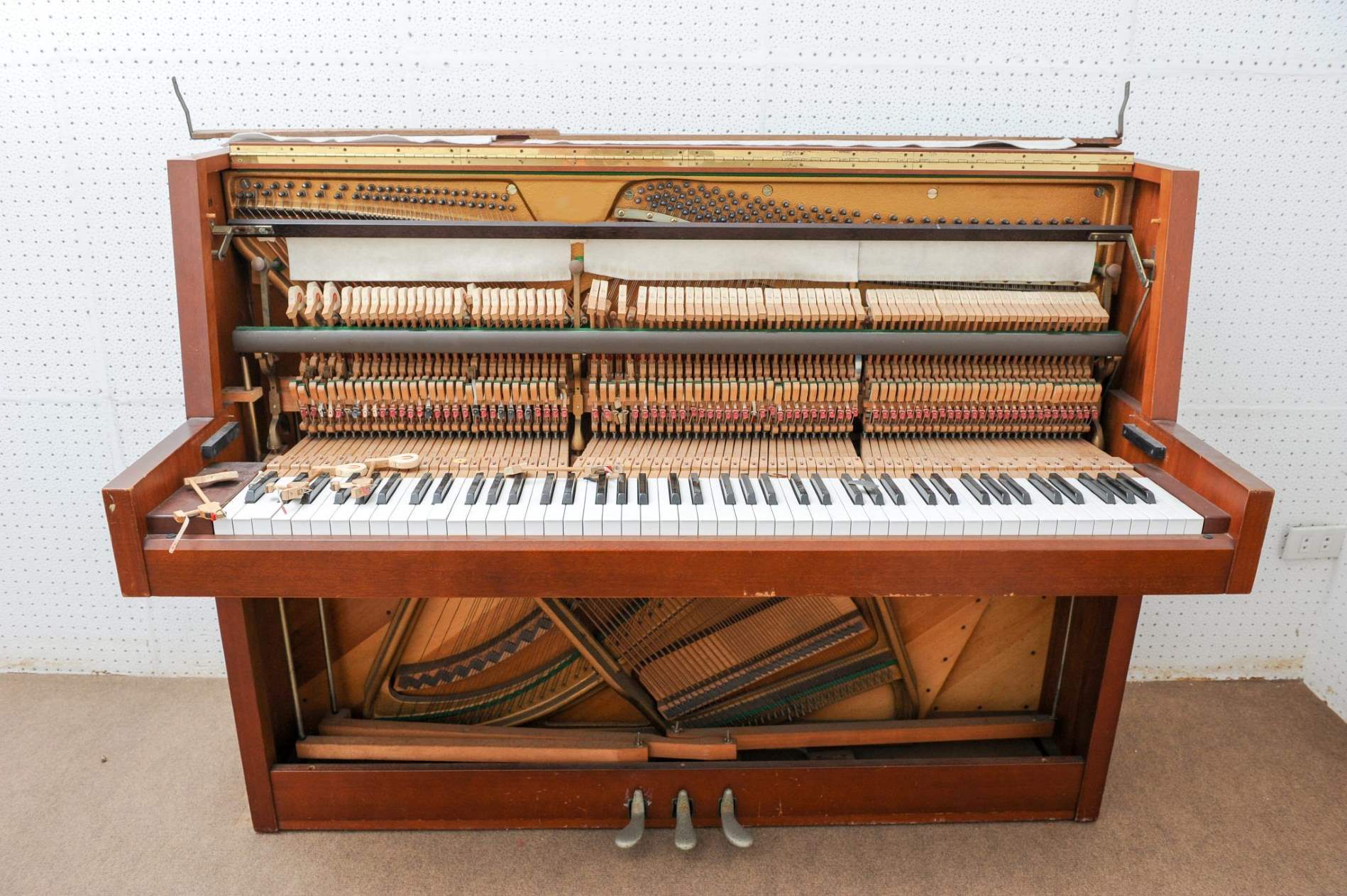Home>Events & Info>Note>How Does A 30 Note Music Box Work
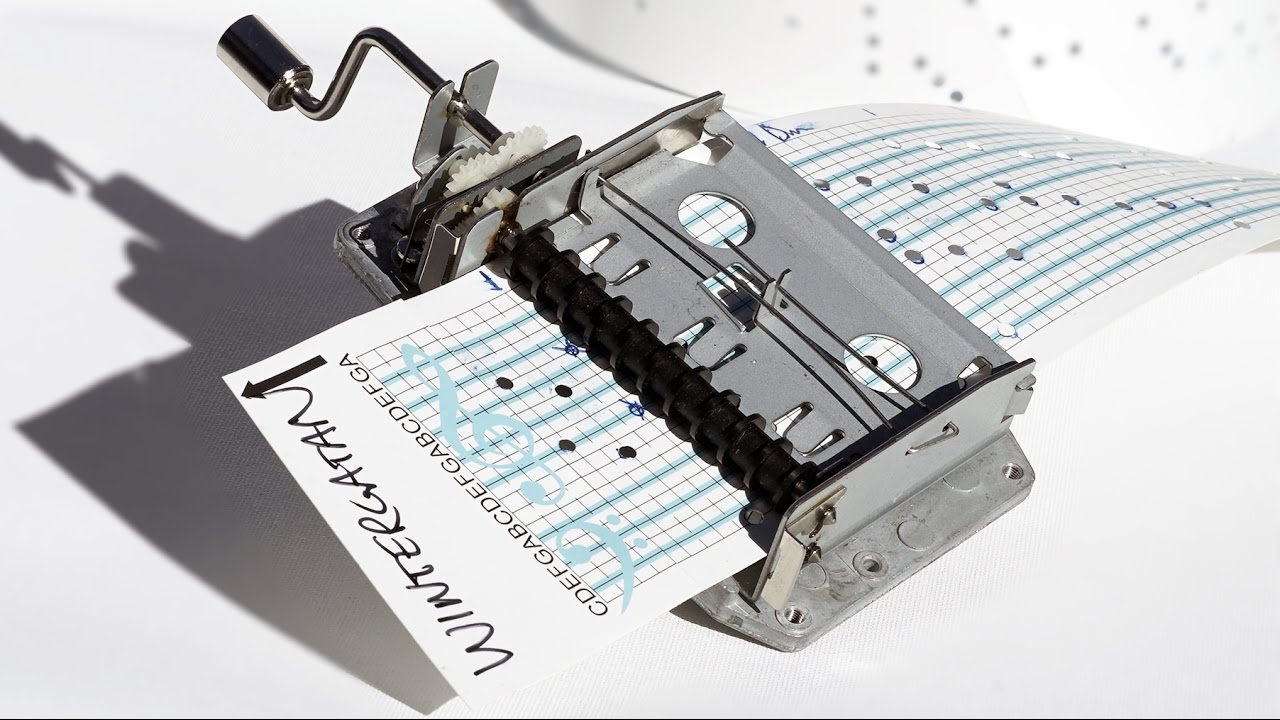

Note
How Does A 30 Note Music Box Work
Published: December 5, 2023
Discover how a 30 note music box works and unlocks melodious tunes with the intricate arrangement of individual notes. Dive into the fascinating mechanics of these musical delights and satisfy your curiosity.
(Many of the links in this article redirect to a specific reviewed product. Your purchase of these products through affiliate links helps to generate commission for AudioLover.com, at no extra cost. Learn more)
Table of Contents
Introduction
Music has the power to touch our souls and evoke emotions like no other form of art. From classical compositions to contemporary pop hits, we enjoy and appreciate music in various forms. One charming instrument that captures the essence of music in a nostalgic and whimsical way is the 30-note music box.
A 30-note music box is a small, compact musical instrument that produces beautiful melodies when wound up. With its delicate sound and elegant design, it is a cherished item for collectors and music enthusiasts alike. But have you ever wondered how exactly a 30-note music box works?
In this article, we will explore the inner workings of a 30-note music box, the history behind its creation, and how it produces those enchanting tunes. We’ll also discuss popular songs and melodies that are commonly played on 30-note music boxes, as well as provide tips on how to care for and maintain these delightful instruments.
So, if you’re ready to embark on a melodic journey through the world of 30-note music boxes, let’s dive in!
History of the 30-note music box
The history of the music box dates back to the late 18th century when Swiss watchmakers began integrating musical mechanisms into their timepieces. These early music boxes were small and played simple tunes using a rotating metal cylinder with small pins that plucked the teeth of a metal comb, creating musical notes.
Over time, the technology behind music boxes evolved, and larger versions with more complex mechanisms were developed. It was in the mid-19th century that the 30-note music box as we know it today started to gain popularity. These music boxes were typically hand-crafted with intricate carvings on the outside and featured a larger variety of tunes.
The 30-note format became particularly popular due to its versatility. It allowed for a broader range of melodies to be played compared to smaller music boxes, which typically had 17 or 18 notes. The combination of quality craftsmanship and the ability to produce a wide range of melodies made the 30-note music box a sought-after item.
Music box manufacturers in Switzerland, such as Reuge and Sankyo, were among the pioneers of producing high-quality 30-note music boxes. These companies perfected the art of creating intricate music box movements and incorporated features like multiple tunes and interchangeable cylinders, allowing users to customize their musical experience.
In the modern era, the popularity of music boxes has endured, with artisans and enthusiasts continuing to appreciate the charm and nostalgia they evoke. Today, you can find a wide variety of 30-note music boxes, ranging from traditional wooden designs to modern interpretations with different materials and finishes.
As we delve deeper into the mechanism and functioning of a 30-note music box, it’s important to appreciate the rich history behind these musical treasures. They have brought joy and happiness to countless generations, and their timeless beauty continues to captivate music lovers around the world.
Components of a 30-note music box
A 30-note music box may appear simple on the outside, but its intricate mechanism is a marvel of craftsmanship. Let’s take a closer look at the various components that work together to create the enchanting melodies.
1. Cylinder: The cylinder is one of the key components of a 30-note music box. It is a metal cylinder with pins or protrusions arranged along its surface. When rotated, these pins engage with the music box’s comb to produce sound. The arrangement of the pins determines the sequence of notes for a specific melody.
2. Comb: The comb is a metal strip with prongs of varying lengths. These prongs vibrate when the cylinder pins strike them, producing musical notes. The number of prongs corresponds to the number of notes a music box can produce.
3. Geneva Drive: The Geneva drive is a mechanical mechanism that controls the rotation of the cylinder. It ensures that the cylinder only turns a fraction of a rotation with each winding, allowing the cylinder pins to engage with the comb in a precise and controlled manner.
4. Governor: The governor is a regulating device that controls the speed at which the cylinder rotates. It prevents the music box from playing too fast or too slow by maintaining a constant and controlled rotation speed, ensuring the melodies are played at the desired tempo.
5. Spring Barrel: The spring barrel houses the mainspring, which stores the energy needed to drive the music box’s mechanism. When the music box is wound up, the mainspring is tensioned, and as it unwinds, it gradually releases energy to power the rotating cylinder and movement of the various components.
6. Fly Fan: The fly fan is a fan-shaped component attached to the cylinder. Its purpose is to regulate the airflow within the music box, allowing for more consistent and stable sound production. The fly fan also adds aesthetic value, as it spins gracefully when the music box is playing.
These are the essential components of a 30-note music box, each playing a crucial role in producing the delightful melodies that bring joy to our ears. The craftsmanship and precision required to assemble these components are a testament to the ingenuity and dedication of the artisans who create these beautiful musical instruments.
The mechanism behind the music box
At first glance, a 30-note music box may seem like a simple instrument, but its internal mechanism is quite intricate. Let’s delve into the mechanism that brings these charming music boxes to life.
When you wind up a 30-note music box, you are tightening the mainspring inside the spring barrel. As the mainspring unwinds, it releases stored energy that powers the entire mechanism. The key components – the cylinder, comb, and Geneva drive – work together to create the melodies.
When the music box is wound up, the Geneva drive controls the rotation of the cylinder. The Geneva drive has a wheel with small, evenly spaced teeth and a rotating finger. As the mainspring unwinds, the finger of the Geneva drive catches onto the teeth of the wheel, causing the cylinder to rotate a certain distance.
On the surface of the cylinder, there are pins or protrusions arranged in a specific pattern. As the cylinder turns, these pins come into contact with the comb, which has metal prongs of varying lengths. When a pin on the cylinder engages with a corresponding prong on the comb, it plucks the prong, creating a musical note.
The sequence and arrangement of the pins on the cylinder determine the specific melody that is played. Each pin corresponds to a different note, and as the cylinder rotates, it engages with the appropriate prongs of the comb, creating a beautiful sequence of musical tones.
The governor, another essential component, ensures that the rotation of the cylinder remains constant and regulated. It prevents the music box from playing too fast or too slow by controlling the speed at which the cylinder rotates. This ensures that the melodies are played at a consistent tempo.
The fly fan, attached to the cylinder, serves multiple purposes. It regulates the airflow within the music box, helping to produce a more consistent and stable sound. It also adds a visual element of grace as it spins in synchronization with the rotation of the cylinder.
All these components work harmoniously to create the magical melodies that emanate from a 30-note music box. The ingenious design and mechanism behind these instruments showcase the craftsmanship and precision needed to produce such enchanting sounds.
How the notes are produced
The production of notes in a 30-note music box involves a combination of precise mechanical movements and the interaction between the cylinder and the comb. Let’s explore how these elements work together to produce the beautiful melodies.
As mentioned earlier, the cylinder of a 30-note music box has pins or protrusions arranged in a specific pattern. These pins come into contact with the comb, which consists of metal prongs of varying lengths. When a pin on the cylinder engages with a corresponding prong on the comb, it plucks the prong, producing a musical note.
The length of each prong on the comb determines the pitch of the note it produces. Longer prongs produce lower notes, while shorter prongs create higher notes. The number of prongs on the comb corresponds to the number of different notes the music box can produce.
When the cylinder rotates, the pins come into contact with the comb’s prongs in a specific sequence, following the pattern designed for a particular melody. This interaction between the pins and the prongs results in a series of plucking actions, akin to the way a guitar string is plucked to produce sound.
The material of the comb, usually made of hardened steel, plays a significant role in the quality of the sound produced. The precision and craftsmanship involved in shaping and tuning the comb are crucial to achieving the desired tone and resonance.
Furthermore, the spacing between the pins on the cylinder determines the rhythm and timing of the melody played. A carefully arranged sequence of pins creates the specific timing required for a particular tune. This precision ensures that the music box accurately plays the melody as intended by the composer.
By controlling the rotation speed of the cylinder and the interaction between the pins and prongs, a 30-note music box is able to produce a wide range of notes, allowing for diverse melodies to be played.
As you listen to the enchanting melodies produced by a 30-note music box, it’s fascinating to appreciate the intricate mechanical process involved in creating each note. The combination of precision craftsmanship, meticulous design, and the magic of music comes together to fill our ears with sweet and nostalgic tunes.
Tuning and arranging the 30-note music box
Creating a harmonious and balanced melody in a 30-note music box requires careful tuning and arranging of the notes. Let’s explore the process of tuning and arranging these charming musical instruments.
Tuning a 30-note music box involves adjusting the length and tension of the comb prongs to ensure that each note produces the desired pitch. This process requires the skilled hands of experienced artisans who meticulously shape and tune each prong to perfection.
The tuning process begins by determining the desired pitch range for the music box. The artisans carefully adjust the length of each prong, either by shortening or lengthening it, until it produces the correct pitch when plucked by the corresponding pin on the cylinder. This ensures that the notes are in tune with each other, creating a harmonious melody.
Once the tuning is complete, the arrangement of the notes on the cylinder needs to be considered. Music boxes are often arranged to play a specific tune or melody, typically with a predetermined sequence of notes. The arrangement on the cylinder ensures that the pins contact the comb’s prongs in the proper order, creating the intended melody.
Arranging the notes on the cylinder requires careful planning and precision. Each pin represents a specific note in the melody, and the spacing between the pins determines the timing and rhythm of the music. Skilled artisans meticulously map out the sequence of pins on the cylinder, ensuring that they align with the desired melody arrangement.
During the arranging process, artisans also consider factors such as dynamics and expression. The intensity of the notes, whether soft or loud, can be adjusted through the positioning of the pins and the shaping of the comb prongs. This allows for a more nuanced and emotive interpretation of the melody by the music box.
Some 30-note music boxes feature changeable cylinders, allowing users to swap out different arrangements for a wider selection of melodies. These cylinders can be purchased separately or custom-made, providing the flexibility to personalize the music played by the music box.
The tuning and arranging process is a meticulous art form that requires patience, skill, and an acute sense of hearing. The artisans’ dedication to perfection ensures that each 30-note music box delivers a captivating musical experience.
Whether you’re listening to a classic tune or a contemporary melody, the careful tuning and arrangement of a 30-note music box contribute to its ability to evoke emotions and enchant listeners.
Popular songs and melodies for 30-note music boxes
A 30-note music box offers a delightful repertoire of melodies that can captivate and transport us to a nostalgic world. Let’s explore some popular songs and melodies commonly played on these enchanting instruments.
1. Canon in D: Johann Pachelbel’s timeless composition, Canon in D, is a favorite among music box enthusiasts. Its soothing and melodic progression lends itself beautifully to the limited range of a 30-note music box, creating a mesmerizing rendition.
2. Für Elise: Ludwig van Beethoven’s iconic piano piece, Für Elise, has been adapted for various instruments, including the 30-note music box. The delicate and expressive melody translates well onto the limited musical range, encapsulating the charm and elegance of the original composition.
3. Edelweiss: This classic song from the beloved musical “The Sound of Music” is often played on 30-note music boxes. Its simple yet heartwarming melody evokes the beauty of the Alpine landscapes, taking us to a world of blissful nostalgia.
4. Over the Rainbow: The enchanting melody from the movie “The Wizard of Oz,” Over the Rainbow, is a popular choice for 30-note music box arrangements. Its evocative and dreamlike quality shines through, captivating listeners with its timeless charm.
5. La Vie en Rose: The soulful French melody, La Vie en Rose, made famous by Edith Piaf, is often played on 30-note music boxes. Its romantic and heartfelt composition beautifully carries the emotions and sentiments of the original song.
6. Moon River: The Academy Award-winning song, Moon River, from the film “Breakfast at Tiffany’s,” is a beloved melody that resonates with listeners. Its nostalgic and dreamy quality translates beautifully onto a 30-note music box, capturing the essence of the original composition.
These are just a few examples of the vast repertoire of songs and melodies that can be arranged for a 30-note music box. From classical compositions to movie themes and popular tunes, the versatility of these instruments allows for a wide range of musical interpretations.
Whether you prefer timeless classics or contemporary favorites, the enchanting melodies produced by a 30-note music box can evoke emotions, transport us to cherished memories, and create a truly magical auditory experience.
Maintenance and care for 30-note music boxes
To ensure the longevity and optimal performance of your 30-note music box, proper maintenance and care are essential. Let’s explore some guidelines to keep your beloved musical instrument in top condition.
1. Handle with care: When handling your 30-note music box, always use gentle and deliberate movements. Avoid shaking or dropping it, as this can damage the delicate internal components and affect the sound quality.
2. Store in a safe place: When not in use, store your music box in a dry and protected area. Avoid exposing it to excessive humidity or direct sunlight, as this can cause damage to the wooden case or affect the mechanism’s performance.
3. Regular cleaning: Dust and debris can accumulate on the surface and inside the music box, affecting its sound quality. Use a soft, lint-free cloth to gently wipe the exterior and remove any dust or fingerprints. Use a small brush or compressed air to clean the comb, removing any particles that may have settled between the prongs.
4. Avoid extreme temperatures: Prolonged exposure to extreme temperatures can warp the wooden casing or cause damage to the internal components. Store your 30-note music box in a temperature-controlled environment to preserve its condition.
5. Winding and lubrication: To ensure smooth operation, follow the manufacturer’s instructions for winding the music box. Over-winding can cause damage to the mechanism, so it’s important to wind it only as much as instructed. Additionally, at regular intervals, it may be necessary to apply a small amount of lubricant to the axle or gears to maintain smooth movement.
6. Professional servicing: If your 30-note music box experiences any mechanical issues or a decline in sound quality, it may require professional servicing. Seek out a reputable music box repair specialist who can diagnose and resolve any issues that arise.
7. Enjoy from a distance: While the melodies of a 30-note music box are delightful to listen to, avoid bringing the music box too close to your ears or placing it near other loud sound sources. Excessive volume or high-intensity sounds can potentially damage the delicate mechanism or affect the quality of the music.
By following these maintenance and care tips, your 30-note music box can continue to bring joy and enchantment for years to come. Treat it with love and appreciation, and it will reward you with its timeless melodies and charm.
Conclusion
The 30-note music box is a mesmerizing and captivating instrument that has enchanted generations with its melodic charm. From its rich history to the intricate mechanism behind its operation, the 30-note music box showcases the craftsmanship and artistry of its creators.
Throughout this article, we have explored the components that make up a 30-note music box, delved into the mechanism responsible for its beautiful melodies, and learned about popular songs often played on these instruments. We have also discussed the importance of proper maintenance and care to ensure the longevity and optimal performance of your cherished music box.
Whether you are a collector, a music enthusiast, or simply someone who appreciates the magic of music, a 30-note music box holds a special place in your heart. Its elegant design, nostalgic melodies, and timeless charm make it an item to be treasured and passed down through generations.
So the next time you wind up your 30-note music box and listen to its enchanting melodies, take a moment to appreciate the ingenuity and artistry that goes into creating such a whimsical instrument. Immerse yourself in the soothing melodies and allow the music to transport you to a world of nostalgia and wonder.
In a fast-paced and technology-driven world, the 30-note music box reminds us of the simple joy and beauty found in the art of crafts and music. Let its melodies bring peace, tranquility, and a touch of magic to your life.




